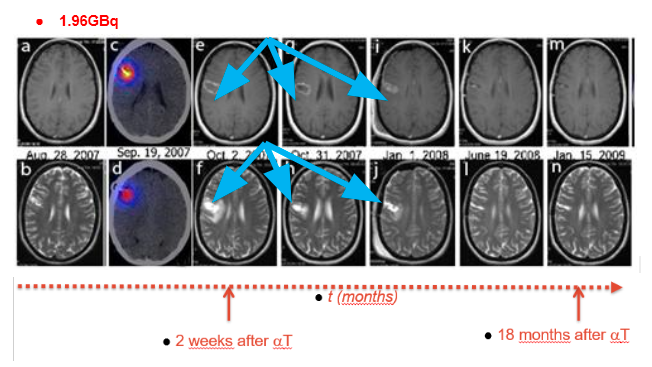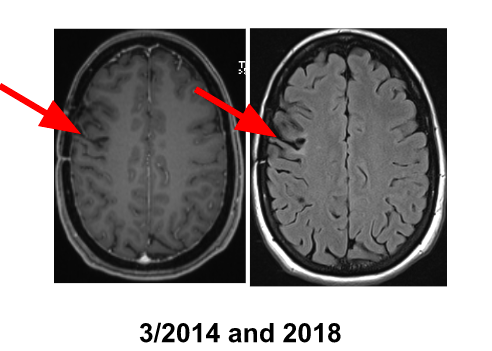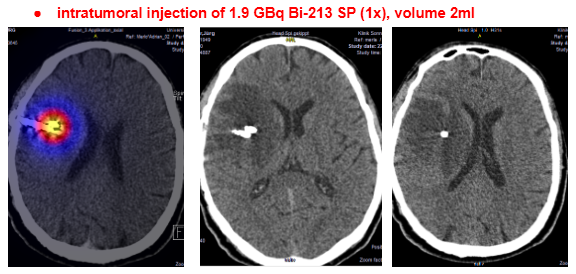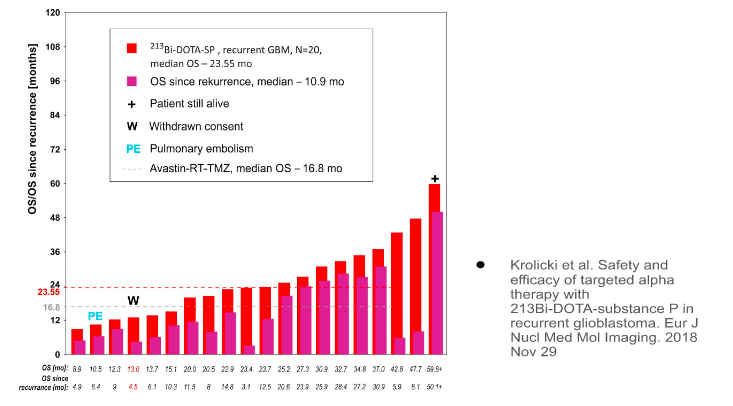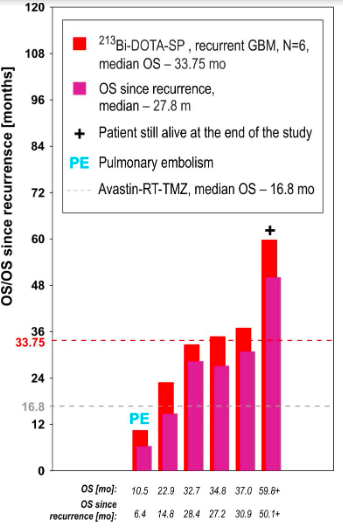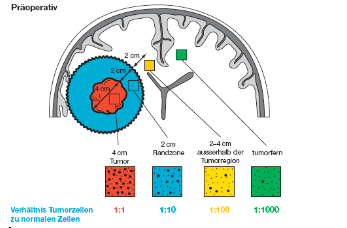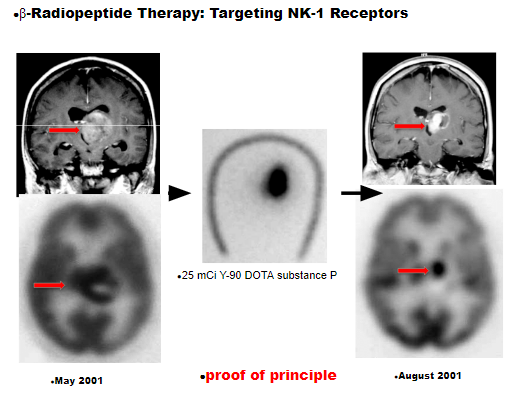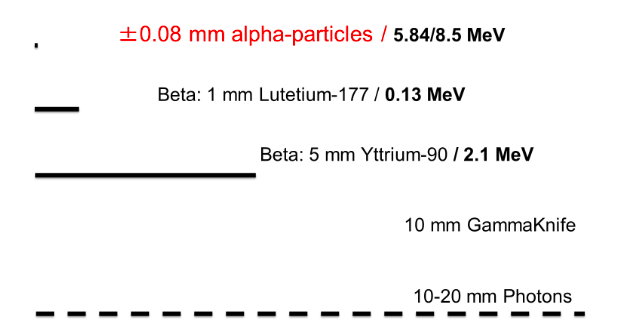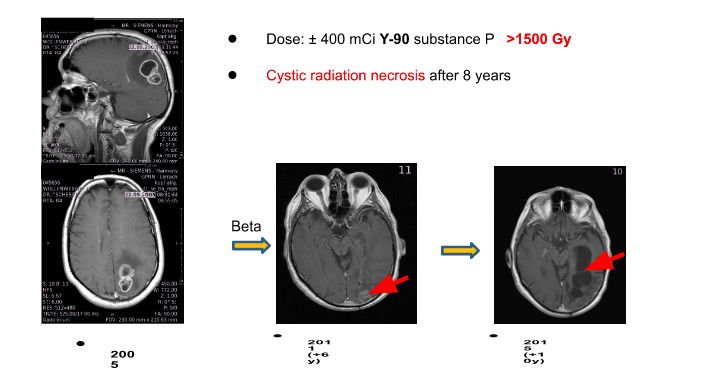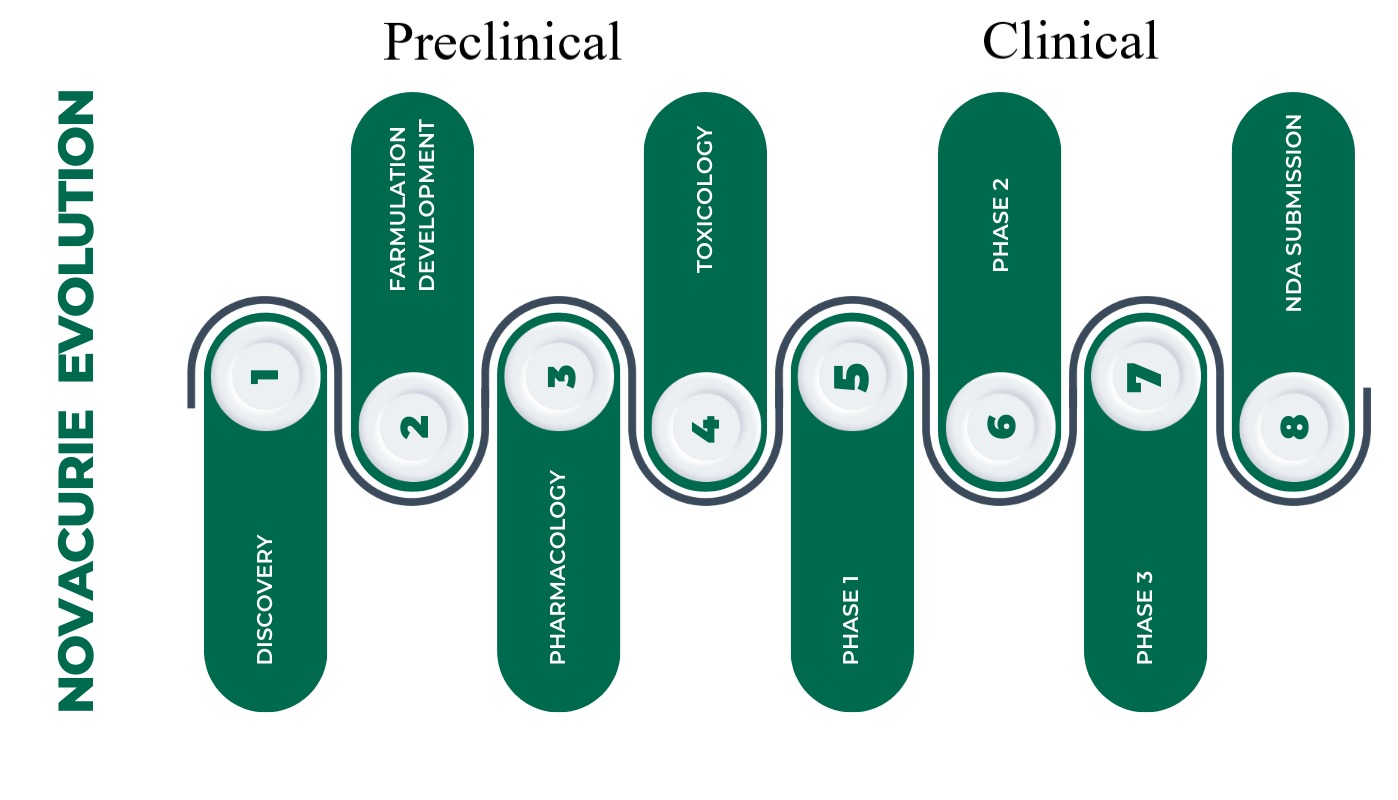Beginn day 9, resolved day 40 after alpha-therapy: Moderate brachiofacial hemiparesis L, completely resolved, No permanent deficit!
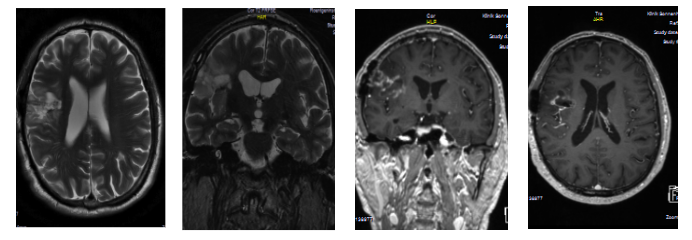
No open surgery
Alpha should not damage neurons, proof of concept: direct injection into motor cortex Can tumor cells infiltrating a functionally critical area of the brain be safely targeted?
Risk of damaging neurons?
Ratio astrocytes to neurons ≈ 10:1
Range: beta 1-5mm alpha: 0.08mm
Alpha particles do not destroy adjacent neurons Minimal damage possible (subclinical) Alpha particles suitable to target functional areas Caveat: repetitive injections, pre-treatment


